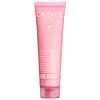What's inside
What's inside
 Key Ingredients
Key Ingredients

 Benefits
Benefits

 Concerns
Concerns

No concerns
 Ingredients Side-by-side
Ingredients Side-by-side

Water
Skin ConditioningGlycerin
HumectantVitis Vinifera Fruit Water
Skin ConditioningIsostearyl Isostearate
EmollientOctyldodecyl Myristate
EmollientSqualane
EmollientMicrocrystalline Cellulose
AbsorbentCaprylic/Capric Triglyceride
MaskingBenzyl Alcohol
PerfumingXanthan Gum
EmulsifyingCarbomer
Emulsion StabilisingCellulose Gum
Emulsion StabilisingCaprylyl Glycol
EmollientVitis Vinifera Juice
AntioxidantSodium Hyaluronate
HumectantSodium Hydroxide
BufferingAloe Barbadensis Leaf Juice Powder
Skin ConditioningHelianthus Annuus Seed Oil
EmollientSodium Phytate
Tocopherol
AntioxidantCitric Acid
BufferingDehydroacetic Acid
PreservativeSodium Carboxymethyl Beta-Glucan
CleansingSodium Benzoate
MaskingPotassium Sorbate
PreservativeParfum
MaskingWater, Glycerin, Vitis Vinifera Fruit Water, Isostearyl Isostearate, Octyldodecyl Myristate, Squalane, Microcrystalline Cellulose, Caprylic/Capric Triglyceride, Benzyl Alcohol, Xanthan Gum, Carbomer, Cellulose Gum, Caprylyl Glycol, Vitis Vinifera Juice, Sodium Hyaluronate, Sodium Hydroxide, Aloe Barbadensis Leaf Juice Powder, Helianthus Annuus Seed Oil, Sodium Phytate, Tocopherol, Citric Acid, Dehydroacetic Acid, Sodium Carboxymethyl Beta-Glucan, Sodium Benzoate, Potassium Sorbate, Parfum
Aloe Barbadensis Leaf Juice
Skin ConditioningWater
Skin ConditioningDicaprylyl Carbonate
EmollientPropanediol
SolventGlycerin
HumectantNiacinamide
SmoothingSaccharide Isomerate
HumectantArginine
MaskingCamellia Sinensis Leaf Water
MaskingAllantoin
Skin ConditioningBetaine
HumectantLonicera Caprifolium Flower Extract
PerfumingLonicera Japonica Flower Extract
Skin ConditioningCaprylyl Glycol
EmollientAcrylates/C10-30 Alkyl Acrylate Crosspolymer
Emulsion StabilisingSodium Gluconate
Skin ConditioningPhenethyl Alcohol
MaskingSodium Hydroxide
BufferingAloe Barbadensis Leaf Juice, Water, Dicaprylyl Carbonate, Propanediol, Glycerin, Niacinamide, Saccharide Isomerate, Arginine, Camellia Sinensis Leaf Water, Allantoin, Betaine, Lonicera Caprifolium Flower Extract, Lonicera Japonica Flower Extract, Caprylyl Glycol, Acrylates/C10-30 Alkyl Acrylate Crosspolymer, Sodium Gluconate, Phenethyl Alcohol, Sodium Hydroxide
 Reviews
Reviews

Ingredients Explained
These ingredients are found in both products.
Ingredients higher up in an ingredient list are typically present in a larger amount.
Caprylyl Glycol is a humectant and emollient, meaning it attracts and preserves moisture.
It is a common ingredient in many products, especially those designed to hydrate skin. The primary benefits are retaining moisture, skin softening, and promoting a healthy skin barrier.
Though Caprylyl Glycol is an alcohol derived from fatty acids, it is not the kind that can dry out skin.
This ingredient is also used as a preservative to extend the life of products. It has slight antimicrobial properties.
Learn more about Caprylyl GlycolGlycerin is already naturally found in your skin. It helps moisturize and protect your skin.
A study from 2016 found glycerin to be more effective as a humectant than AHAs and hyaluronic acid.
As a humectant, it helps the skin stay hydrated by pulling moisture to your skin. The low molecular weight of glycerin allows it to pull moisture into the deeper layers of your skin.
Hydrated skin improves your skin barrier; Your skin barrier helps protect against irritants and bacteria.
Glycerin has also been found to have antimicrobial and antiviral properties. Due to these properties, glycerin is often used in wound and burn treatments.
In cosmetics, glycerin is usually derived from plants such as soybean or palm. However, it can also be sourced from animals, such as tallow or animal fat.
This ingredient is organic, colorless, odorless, and non-toxic.
Glycerin is the name for this ingredient in American English. British English uses Glycerol/Glycerine.
Learn more about GlycerinSodium Hydroxide is also known as lye or caustic soda. It is used to adjust the pH of products; many ingredients require a specific pH to be effective.
In small amounts, sodium hydroxide is considered safe to use. However, large amounts may cause chemical burns due to its high alkaline.
Your skin has a natural pH and acid mantle. This acid mantle helps prevent harmful bacteria from breaking through. The acid mantle also helps keep your skin hydrated.
"Alkaline" refers to a high pH level. A low pH level would be considered acidic.
Learn more about Sodium HydroxideWater. It's the most common cosmetic ingredient of all. You'll usually see it at the top of ingredient lists, meaning that it makes up the largest part of the product.
So why is it so popular? Water most often acts as a solvent - this means that it helps dissolve other ingredients into the formulation.
You'll also recognize water as that liquid we all need to stay alive. If you see this, drink a glass of water. Stay hydrated!
Learn more about Water